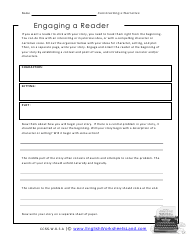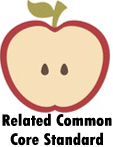Constructing Narratives Worksheets To Print:
Engaging a Reader – How do you really get them to buy into what you are writing?
Getting the Story Started – Write three different versions of the same story.
Every Word of This is True... – People love true stories, look at what we call "Reality TV".
Writing is for Readers! – What if you could guide the reader's focus to your story?
Lost in Another World – Making the reader feel something about your work is paramount.
Let Your Narrator Set the Expectations – Imagine you are a character in one of your favorite movies.
It's Only a Story if Something Happens! – The events of a story are called a plot. These events should unfold naturally and logically. Practice making up plots to stories.
The First Person Narrative – How a first person narrator talks can tell you a lot about them, and how they are going to interact with the events of the story.
Orient Your Reader – Who do you think is going to be the main point of view character in the story? Is the character a human?
Setting Tone and Pace with Voice and Point of View – Who do you think is going to be the main point of view character in the story? Is the character a human?
Constructing a Narrative – Do you have an idea for a story? Fill out the organizer with your ideas for character, setting, plot and narrative point of view.
Establishing a Narrative – The beginning of a story is very important. It introduces the characters and the setting, gives the story context, and grabs the reader's interest.
Relating the Beginning to the End – To create the beginning and middle of the story, you will need to imagine many possibilities.
Establishing a Narrative – All stories have some basic elements in common. Plan the main ideas of your story by using the outline below.
Writing the Beginning – Imagine you are a character in one of your favorite movies. Write the beginning of that story.
Get FREE English Worksheets In Your Email

